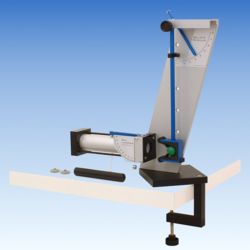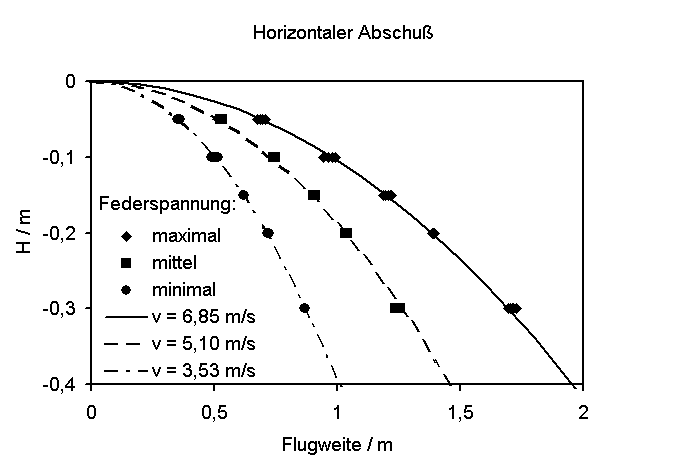Mechanics
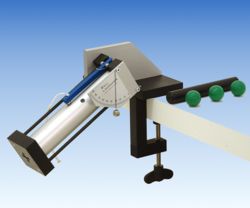
Ball Launcher with Holder
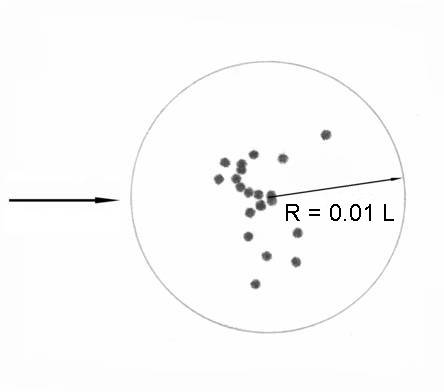
Typical Results for 20 Shots. L = distance (here 4.5 m).
Ball Launcher (or projectile launcher), 650267:
- 3 ejection velocities can be selected
- the placement of the ball can be seen through holes in the cylinder
- ranges at 45° und height difference = 0: 1,1 m, 2,3 m and 4,5 m (approx.)
- reproducibility at 45°: standard deviation is smaler than 1%
- nearly rotation free launching of the ball
- launch angles: 0° to +90°
- constant launching height at any launching angle because the pivot point is also the launching point
- adjustable scale
- threads at the bottom side for e.g. a light barrier
- for safety the spring mechanism is closed and the balls are made of plastic
- the bounce of the plastic balls on the table is so weak that there will be no damage normally
- additionally needed:
Holder for Ball Launcher, 650275
or Ballistic Pendulum (see below)
Instruction sheet for further information:
Ball-Launcher.pdf (116 kB)

Ballistic Pendulum, 650273:
- lightweight pendulum - no steel balls necessary
- estimated ball velocities from launch experiments are equal to those from pendulum experiments within ±3 %
- with add masses the influence of pendulum mass can be determined
- elastic (quantitatively) and inelastic (qualitatively) collisions can be carried out
- launch experiments are possible with 5 fixed launch heights: 5, 10, 15, 20, and 30 cm
- table clamp with a span of 65 mm
- made of anodized aluminium
Instruction sheet for further information:
Ballistic-Pendulum.pdf (129 kB)

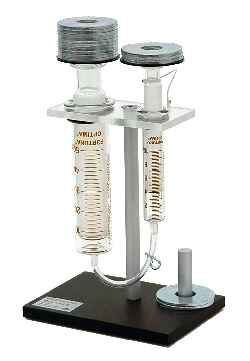
Pressure Balance
Pressure Balance, 650274:
- for simple experiments according to the force and pressure definitions: F=p*A
- ratio of the piston areas: 10 : 3
- ratio of the piston masses including pan: 10 : 3
- includes 15 masses (each approx. 40 g)
- locking wire for the smaller piston
- precision glass syringes (10 ml and 50 ml)
- stand is made of anodized aluminium
- base plate dimensions: 140 mm x 100 mm
Instruction sheet for further information:
Pressure-balance.pdf (120 kB)

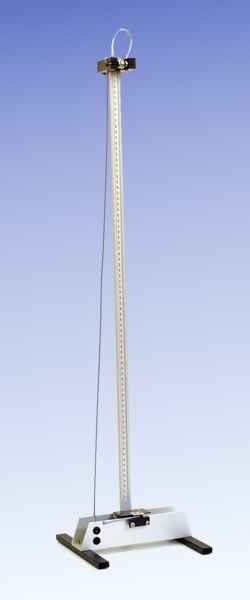
Free Fall Apparatus
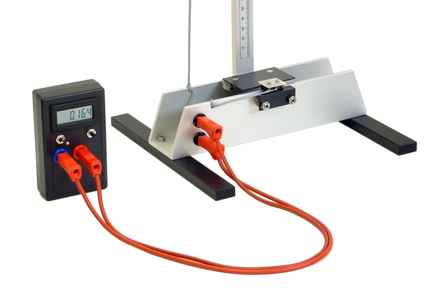
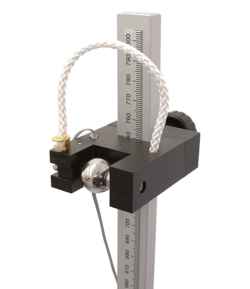
Details
Free Fall Apparatus, 650278:
- for the estimation of the acceleration due to gravity g from falling time
- typical results:
height / m time / s g (calculated) / (m/s^2) 0.1 0.142 9.92 0.2 0.202 9.80 0.4 0.287 9.71 0.6 0.351 9.74 0.8 0.406 9.71 - falling height: 2 to 80 cm
- pure mechanical construction with micro switches - no special stop-watch necessary
- during the fall the electric circuit is closed (jacks with 4 mm diameter)
- stand is made of anodized aluminium
- dimensions: 22 cm x 22 cm x 90 cm
- including 2 steel balls with 17 mm diameter
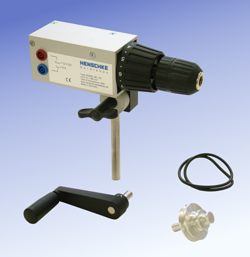
Motor/Generator

The motor is used as alternator
Motor/Alternator, 650280:
- robust motor with planetary gear and quick-catch chuck
- nominal voltage 12 V, no-load speed approx. 480 turns/min
- variable-voltage control: approx. 40 turns/(Volt*min)
- variable torque
- for shafts with 0.8 to 10 mm
- durable case (60 mm x 60 mm) made of anodized aluminium
- stainless steel shaft with 12 mm diameter
- motor can be mounted at the holder for the Ball Launcher, 650275
- mass = 1,2 kg
- including: motor with shaft, crank (for use as Alternator), pulley with 3 diameters
Instruction sheet for further information:
Experiment-Motor-en.pdf (140 kB)

Currently not available!



